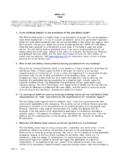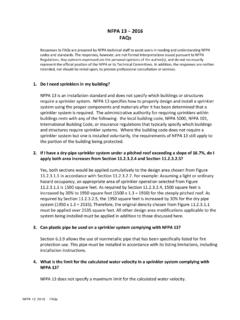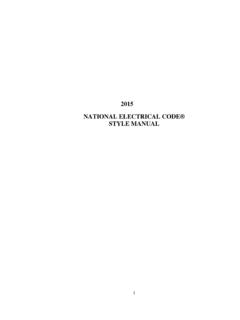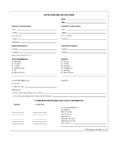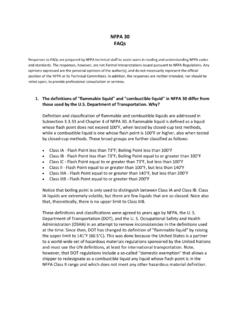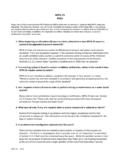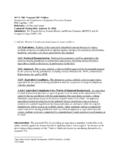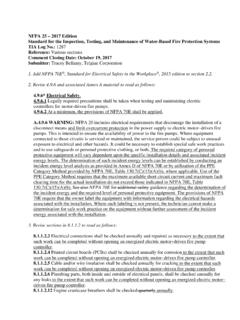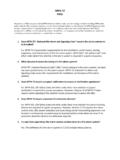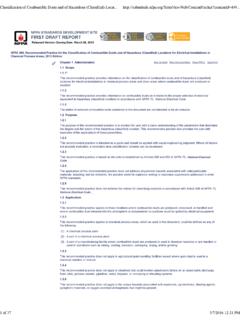Transcription of FACT SHEET: Cancer Risk in Firefighting - NFPA
1 fact sheet : Cancer Risk in FirefightingThis information is provided to help advance fire safety. It does not represent the official position of the NFPA or its Technical Committees. The NFPA disclaims liability for any personal injury, property, or other damages of any nature whatsoever resulting from the use of this informationWITHIN THE FIRE SERVICE, not using SCBA and wearing soiled PPE were long considered badges of fire fighter toughness and bravery. For many fire fighters, those perceptions have been costly, and in some cases deadly.
2 Fire fighters who for years didn t regularly wear SCBA or clean their personal protective equipment (PPE) after returning from fire fighting incidents have developed various forms of Cancer , including lung Cancer , and other long-term illnesses. There are even cases of young fire fighters with far fewer years of contaminant exposure who have received Cancer diagnoses as Contaminant Risk and Exposure (ON BACK) u Recommended Resource Healthy In, Healthy Out: Best Practices for Reducing Firefighter Risk of Exposures to Carcinogens" is a compre-hensive resource developed with funding and support provided by the State of Washington, Department of Labor & Industries, Safety & Health Investment Projects.
3 Visit FIREPROTECTION ASSOCIATIONThe leading information and knowledge resourceon re, electrical and related hazards 2017 National Fire Protection Association / February 3, 2017 Cancer is of increasing concern to the fire service. Find out what's being done to address this health and safety sheet : Cancer Risk in Firefighting (continued)NATIONAL FIREPROTECTION ASSOCIATIONThe leading information and knowledge resourceon re, electrical and related hazardsMinimizing ContaminantExposure and RiskFire service organizations and individual fire departments have become increasingly aware of the health and safety hazards posed by contaminant exposure, and have been working to educate the fire service about ways to reduce those the Fire Protection Research Foundation the research affiliate of the National Fire Protection Association (NFPA)
4 - three major initia-tives are under way to address fire fighter exposure to contaminants on the fireground and beyond:How Clean is Clean: While general PPE cleaning procedures have evolved as best practices, scientifically established methods for removing toxic chemicals, biological pathogens and other hazardous substances from PPE is lacking. Validation of Cleaning Procedures for Fire Fighter PPE (a three-year study due in late 2018) works to identify the contaminants found on PPE and the disinfection/saniti-zation procedures required to remove them.
5 (See )Contamination Control and Beyond: It s quickly becoming rec-ognized that contaminants found on fire fighter PPE are also present far from the fire ground: on hand tools, fire hose, apparatus, stations, and beyond - sometimes even into private vehicles and the homes of fire fighters. The Campaign for Fire Service Contamination Control (a one year- study due in late 2017) aims to educate the fire service about the health and safety risks of contaminant exposure in all these locations, and to provide steps for controlling contaminants spread.
6 Go to for more Cancer Study: Medical doctors and others don t fully understand which exposures are responsible for Cancer in fire fight-ers, the mechanisms by which exposures cause Cancer , nor the most effective means of reducing exposures. The Fire Fighter Cancer Cohort Study is a long-term (30-year) information collection effort led by the University of Arizona to fully address these questions. Up-dates will be provided at intervals throughout the study s duration. Go to for more more of these resources,become an NFPA 2017 National Fire Protection Association / February 3, 2017
